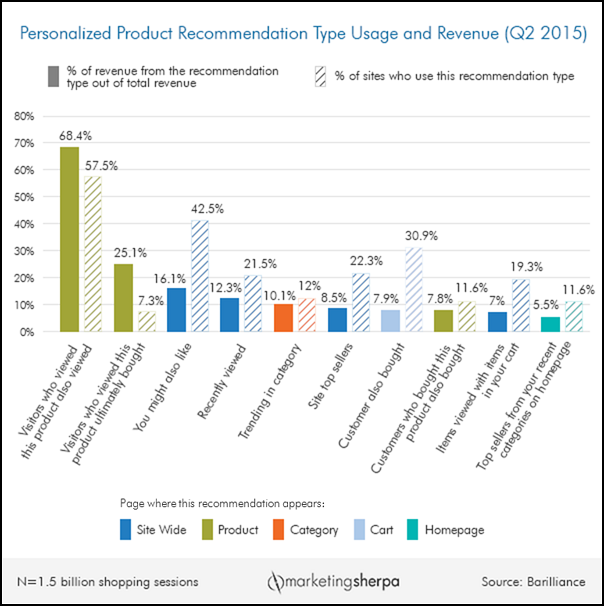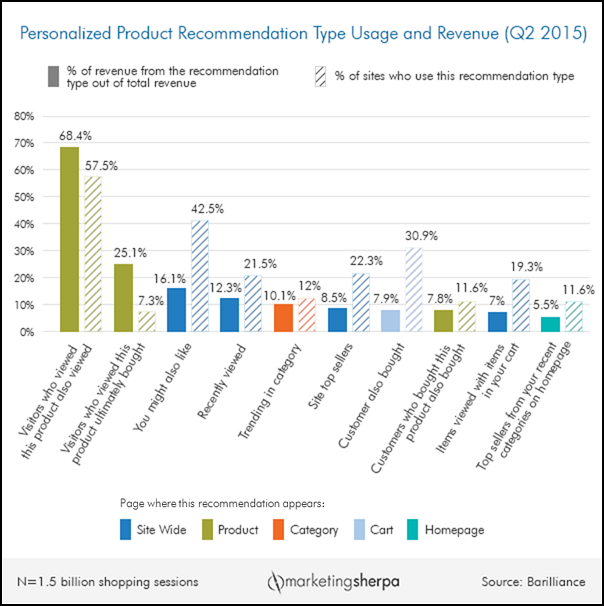
A Beginner’s Guide: Top 3 Ways to Incorporate Personalization into your 2016 Marketing Plan
By Stefanie Florio and Sarah Griffis
Personalization has been a hot topic with marketers for some time now. With increasing accessibility to rich customer data and the right tools, retailers are delivering custom experiences that increase conversions, increase engagement, and drive customer loyalty. If you have not tapped into all the opportunities personalization has to offer, the process of defining a personalization strategy can seem daunting, and with so many data points and solutions, where do you even begin?
Here’s a look at three areas where you can start to test the potential of personalization for your business.
1. Homepage
For many visitors to your website, the homepage is their first touch point with your brand. This is your first opportunity to engage with visitors via content and experience. A one size fits all solution is likely leaving opportunity on the table. So, how can you be thinking about changing your messaging based on your users? Think about these three aspects:
- New vs. Returning Users: Areas of interest for new users could very well differ from returning or long-term customers. New users are probably more interested in learning more about your brand or product. They’ll want to see information upfront about such things as return policies, store locations, and the most popular products. They also may need an extra incentive or discount for the first purchase. On the other hand, returning users most likely already know your brand and have hopefully already converted to customers. By using the data you have for a returning user (like gender and previous purchases), you can personalize your homepage to speak to her interests.
- Customer Geographic Data: Know where the user is from and use that information to connect with them. Is your customer located in the UK? Add specific messaging to international users regarding your shipping capabilities to test boosting international conversions. Do you offer seasonal products that are more useful for one area of the country over another? Think about changing the featured products on your homepage based on your customer – featuring snow gear in November may work for your Midwest customer, but may not resonate with your Southwest audience.
- Category Interest: If you are a retailer that offers multi-category products, targeting content based on user’s interest or need is a basic way to optimize. For example, if a user is enrolled for promotional women’s emails, don’t show them a homepage announcing men’s new arrivals.
These homepage recommendations are typically low effort projects to implement. They can be achieved directly on your eCommerce platform without 3rd party personalization tools. You will want to ensure you have set up appropriate analytics tagging to measure results when launching a new campaign.
2. Product Recommendations
Product recommendations can be a powerful tool to help boost AOV and increase conversions and revenue. However, when it comes to product recommendations, not all recommendations are created equal. There are varying levels of complexities and capabilities depending on the data sources and tools you have available. A report published by Marketing Sherpa ranked ten recommendation types that retailers can use on their eCommerce sites.

Consider implementing at least one or a few of these top performing recommendations types for your business. Test additional recommendation types, measure their performance, and refine your strategy.
There are several tools that can be utilized for driving product recommendation both on your site and in email. While the below list does not compose all vendors, it is a solid starting point:
- Certona
- Rich Relevance
- Monetate
- Predictive Intelligence by Salesforce
- If you are a Demandware client, the platform’s upcoming Predictive Intelligence tool could be a good fit
3. Abandon Cart and Abandon Browse:
Abandon emails can be another high return lower effort project to add to your 2016 agenda. I’m sure most people are familiar with abandon cart emails, which remind customers who have placed something in their cart, but left the site before purchase, that the item or items are still there. These encourage customers who may be unsure of the purchase or perhaps got distracted by another task to reconsider and follow through on buying.
Along with abandoned cart emails, you may also want to consider looking at adding abandon browse to your transactional email arsenal. Abandon browse emails focus on visitors who have viewed different pages on your site (like PDP or category pages), but left before adding an item to their basket. By sending the customer an email specific to the pages they were visiting (for example, sending a message that highlights men’s outerwear if they were looking a different kinds of jackets), you have an opportunity to bring the customer back to make a purchase.
Many ESP solutions have added abandon cart and abandon browse to their solution offerings, and can be a valuable addition to your marketing program.
In addition to native ESP solutions, there are options for third party vendor integrations that use your sites active customer data to trigger these emails to a larger audience (users not required to be logged in), and take into consideration browse behavior. Some third party integrations to consider include:
The key to getting personalization right is through the use of data. By having a better idea of who your customer is, you’ll be able to better guide your customer along their buying journey, as well as delight them with personalized messaging in the process, in turn increasing conversions and boosting your sales.
Want to learn more? Contact us.
Further reading: Analytics and the Path to Personalization
